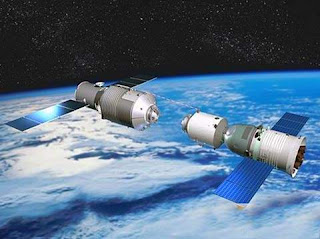OK, I think it's time to come back online, sorry I haven't posted anything for a while.
Something I didn't know until a few nonths ago is that China has never been granted access to the International Space Station (ISS) since the beginning of the program.
I guess they never liked not being part of this international project. And this must be why they launched their own space station program, which should be fully operational by 2020, about the time at which the ISS will be decommissioned, and for at least 10 years after that.
On september 29th, the first of three modules, Tiangong 1 has been successfully sent to space. It will then be de-orbited in 2013 and replaced by the tiangong 2 and 3 modules. In the meantime, Tiangong 1 will be visited by three shenzhou missions (shenzhou 8, an unmanned mission will dock with it in november and shenzhou 9 and 10, two manned missions in 2012).
Their aim is to get a permanent three person crew, just like in the ISS.
I wish China and its taikonauts luck, as the beginning of such a program only a few years after their first manned flight (2003) means a lot and shows how fast China is catching up on all the western countries in terms of technology.








